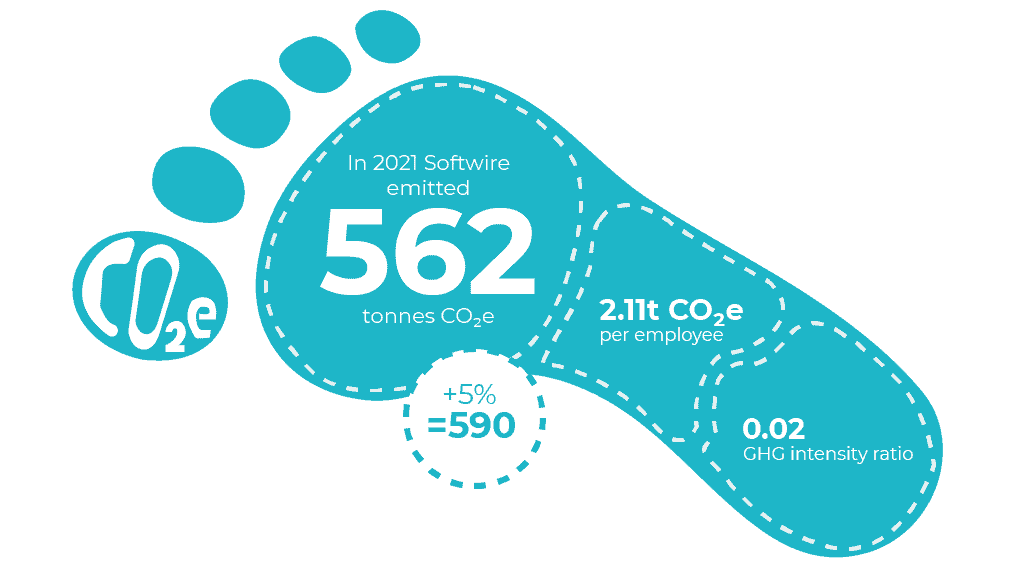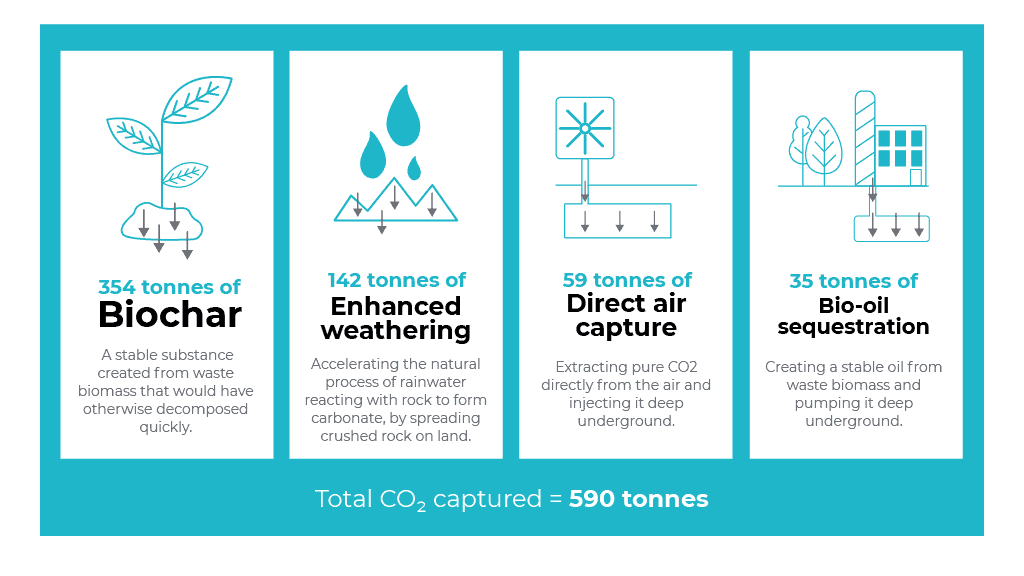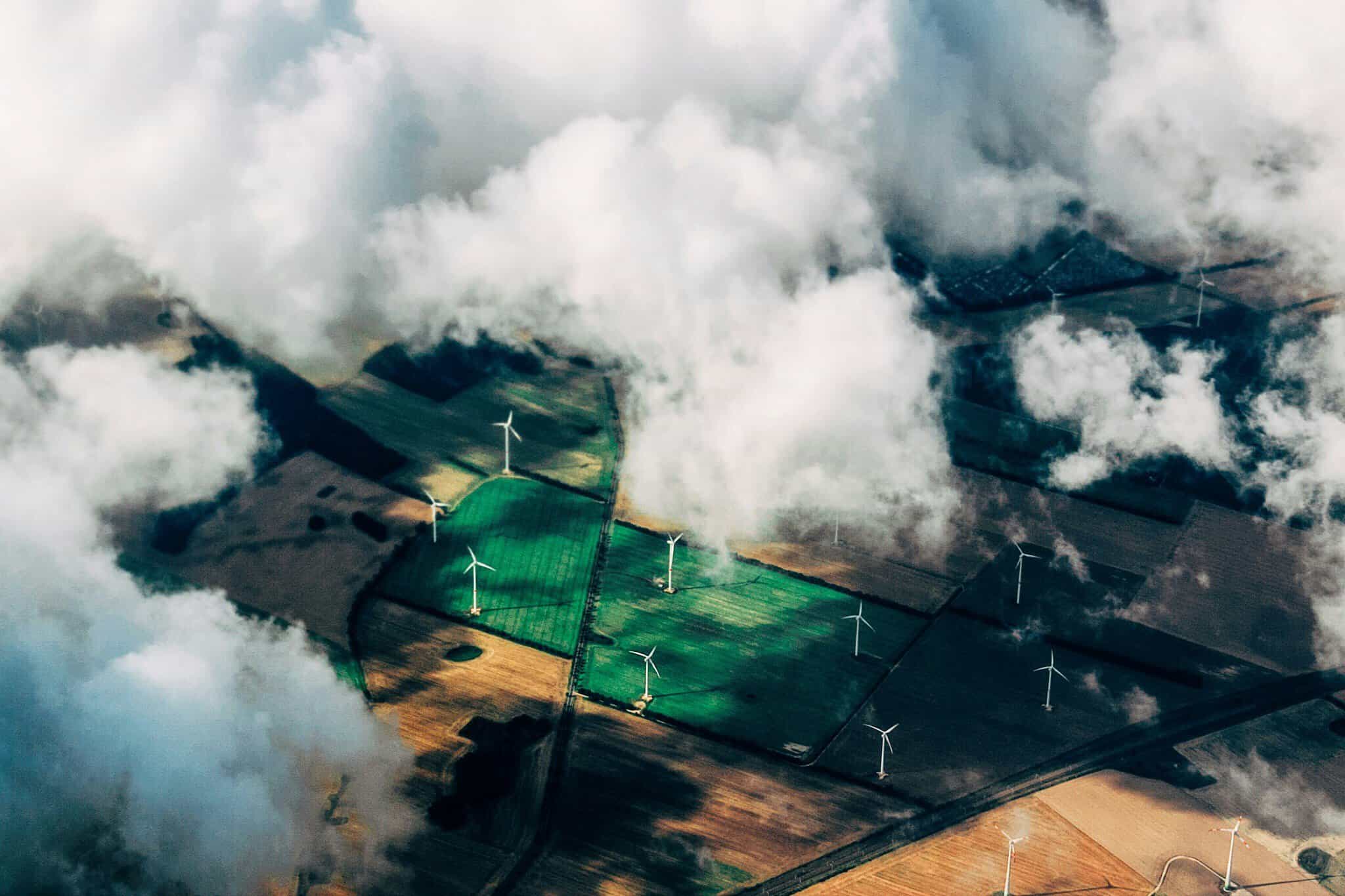At Softwire, we care deeply about doing things well, in a way that will make a genuine difference. In the world of corporate sustainability, it can be difficult to identify truly impactful interventions, as opposed to ones which sound good in theory, but may only make a marginal difference.
Our search for a genuinely impactful climate policy led us to partner with Supercritical, a carbon accounting software company whose mission is to scale up carbon removal by helping technology companies tap into the high-quality offsets market. With their expert help and advice, we measured our 2021 carbon footprint, explored reduction potential and offset our footprint with 590 tonnes of high-quality, long-term carbon dioxide removal offsets.
Carbon dioxide removal at scale plays a critical part in global net zero, to neutralise residual emissions that can’t feasibly be reduced. The IPCC estimates that we need to be removing 10 billion tonnes of carbon dioxide from the atmosphere per year by 2050, even if its ambitious emissions reductions targets are met. Globally, we’ve only removed thousands of tonnes to date.
This is where our small investment can make a big difference. Our 590 tonnes of removed carbon isn’t just cancelling out our own emissions – as early adopters in the emerging market for removal offsets, we’re helping to send a clear signal of future demand. This will attract further investment to reach the scale that the planet now desperately needs.
Our carbon footprint and removals portfolio
The first step towards net zero is to measure a baseline carbon footprint. From there, we can set reductions targets. Supercritical produced a footprint report covering our emissions in 2021, with a breakdown showing where our emissions came from and recommendations on reductions. (We’ll be publishing an article shortly with more detail on this process and what we’re doing to decrease our emissions.)
Here is our baseline footprint:

We offset our 2021 footprint, plus an additional 5% to account for unmeasured emissions from minor sources that could not be reliably estimated. This brought our total figure to 590 tonnes of CO2e.
We purchased only high-quality, long-term carbon removal offsets, at an average price of £170 per tonne of CO2 sequestered, which covered a range of innovative technologies: enhanced weathering, bio-oil sequestration, direct air capture and biochar.

Due to the specific projects involved, 94 tonnes of CO2e from direct air capture and bio-oil won’t be stored away until 2024-2025. To ensure that Softwire can be carbon neutral from today, we also bought the equivalent tonnage of tree-based carbon removal.
While tree-based carbon removal alone is not a long-term solution (as it’s impossible to guarantee that the carbon is locked up permanently), we’ve used it as a short-term stop-gap to allow us to invest in early-stage projects with high potential. For example, our direct air capture supplier Carbon Engineering is developing the world’s first large-scale commercial direct air capture facility, capable of sequestering 1 million tonnes per year. This project will be instrumental in validating the potential of operating this technology at a larger scale.
Our climate pledge
Softwire is committed to reducing our emissions in line with the IPCC pathway to net zero by 2050, i.e. by 90% or more. We’ve scrutinised our processes and behaviour as a company, and identified further ways to minimise our carbon footprint. But, reaching near-zero emissions will take time – to some extent, we rely on upstream cuts across a range of industries such as food, transportation and electronics. So in the meantime, we are also neutralising our emissions with the best possible offsets.
We are committed to remaining carbon neutral using high-quality carbon removals only.
Carbon removal will never substitute our longer-term reduction targets. But, we believe it’s the most effective and impactful thing available to us as a business at the moment.
Let’s do this together
Our net zero approach is the result of a lot of thought and research. We’re proud of the policy we ended up with – we found a real opportunity to make a meaningful difference, to go beyond regulatory requirements and engage with a new and crucial market. We’ll constantly refine and review our approach, and we still have plenty of work to do to reduce our footprint.
We all have a part to play in resolving the climate crisis – only through collective action will we succeed. So, if you’re on this journey as well, get in touch! We’d love to share our thoughts, and hear yours too.


